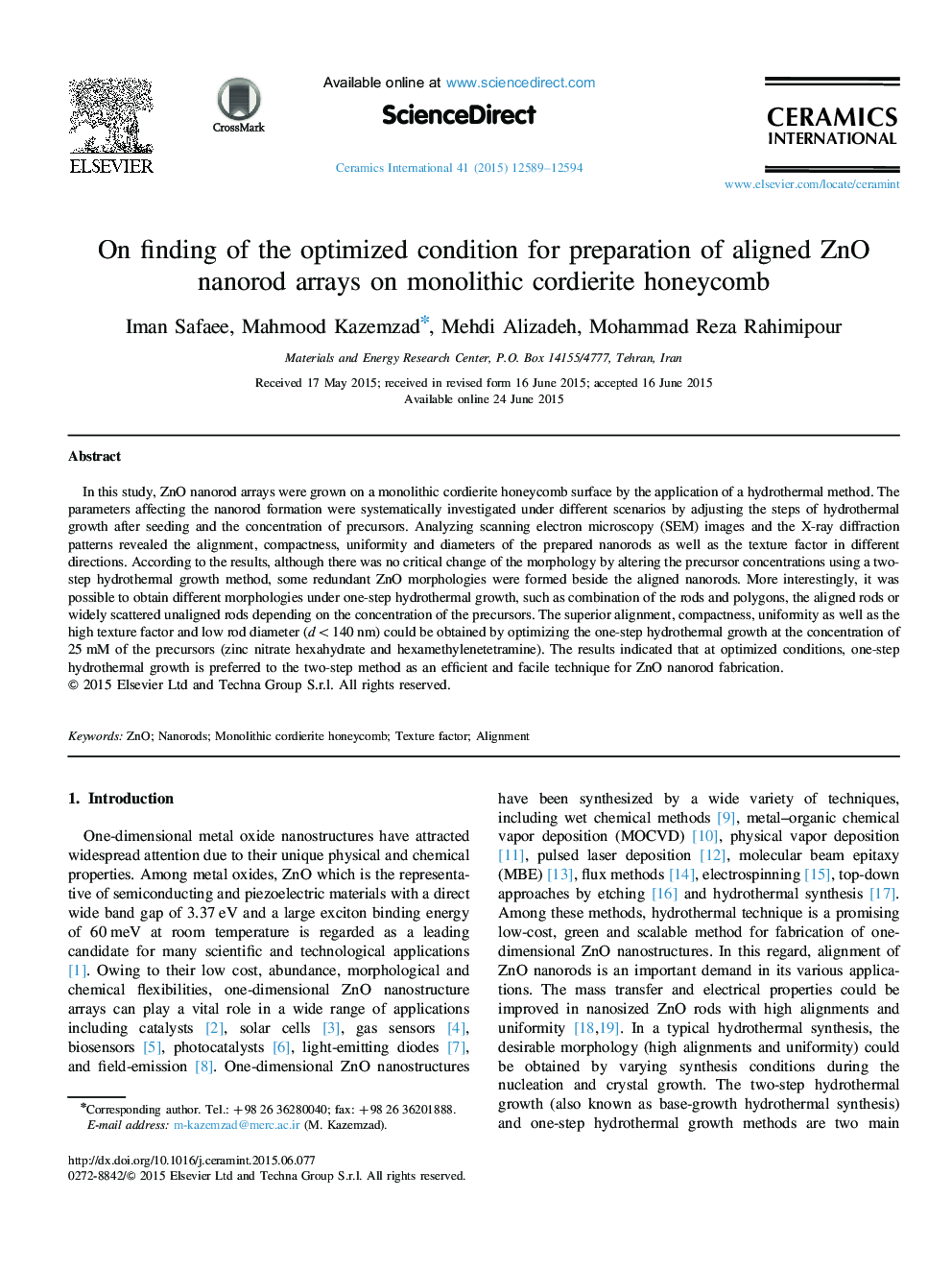| Article ID | Journal | Published Year | Pages | File Type |
|---|---|---|---|---|
| 1459614 | Ceramics International | 2015 | 6 Pages |
In this study, ZnO nanorod arrays were grown on a monolithic cordierite honeycomb surface by the application of a hydrothermal method. The parameters affecting the nanorod formation were systematically investigated under different scenarios by adjusting the steps of hydrothermal growth after seeding and the concentration of precursors. Analyzing scanning electron microscopy (SEM) images and the X-ray diffraction patterns revealed the alignment, compactness, uniformity and diameters of the prepared nanorods as well as the texture factor in different directions. According to the results, although there was no critical change of the morphology by altering the precursor concentrations using a two-step hydrothermal growth method, some redundant ZnO morphologies were formed beside the aligned nanorods. More interestingly, it was possible to obtain different morphologies under one-step hydrothermal growth, such as combination of the rods and polygons, the aligned rods or widely scattered unaligned rods depending on the concentration of the precursors. The superior alignment, compactness, uniformity as well as the high texture factor and low rod diameter (d<140 nm) could be obtained by optimizing the one-step hydrothermal growth at the concentration of 25 mM of the precursors (zinc nitrate hexahydrate and hexamethylenetetramine). The results indicated that at optimized conditions, one-step hydrothermal growth is preferred to the two-step method as an efficient and facile technique for ZnO nanorod fabrication.
